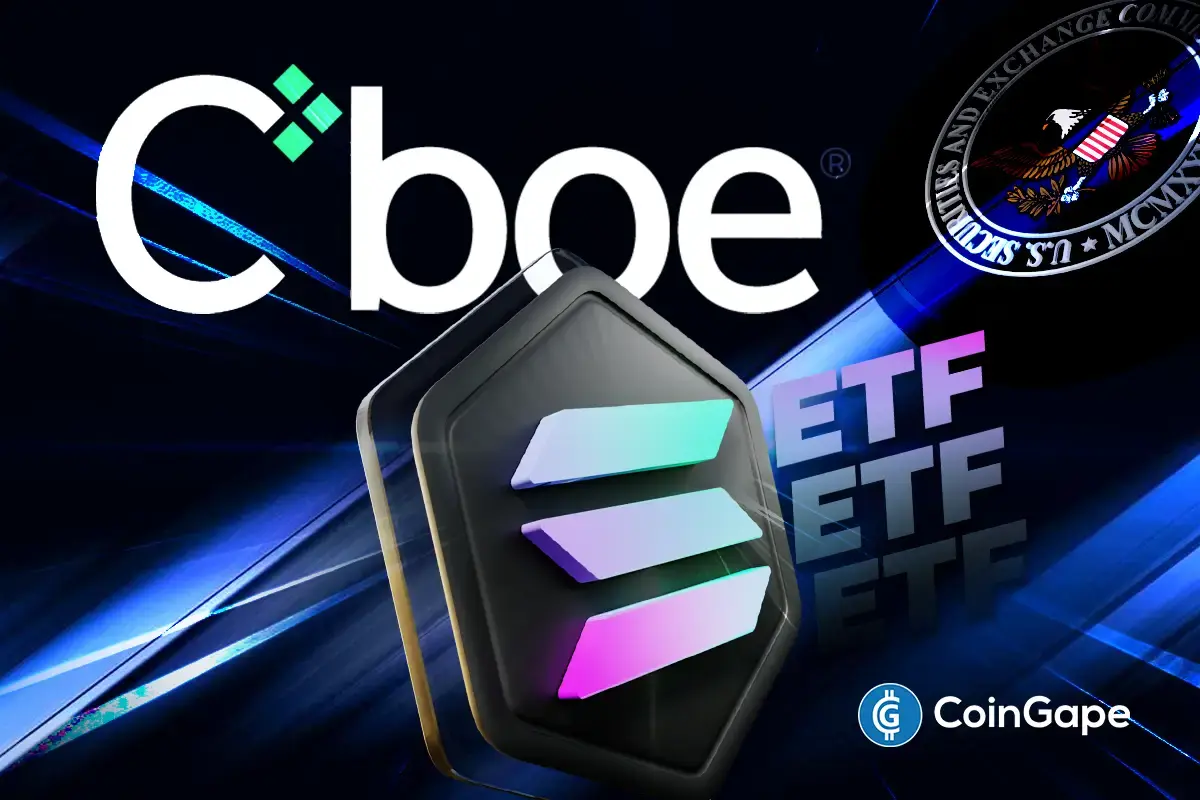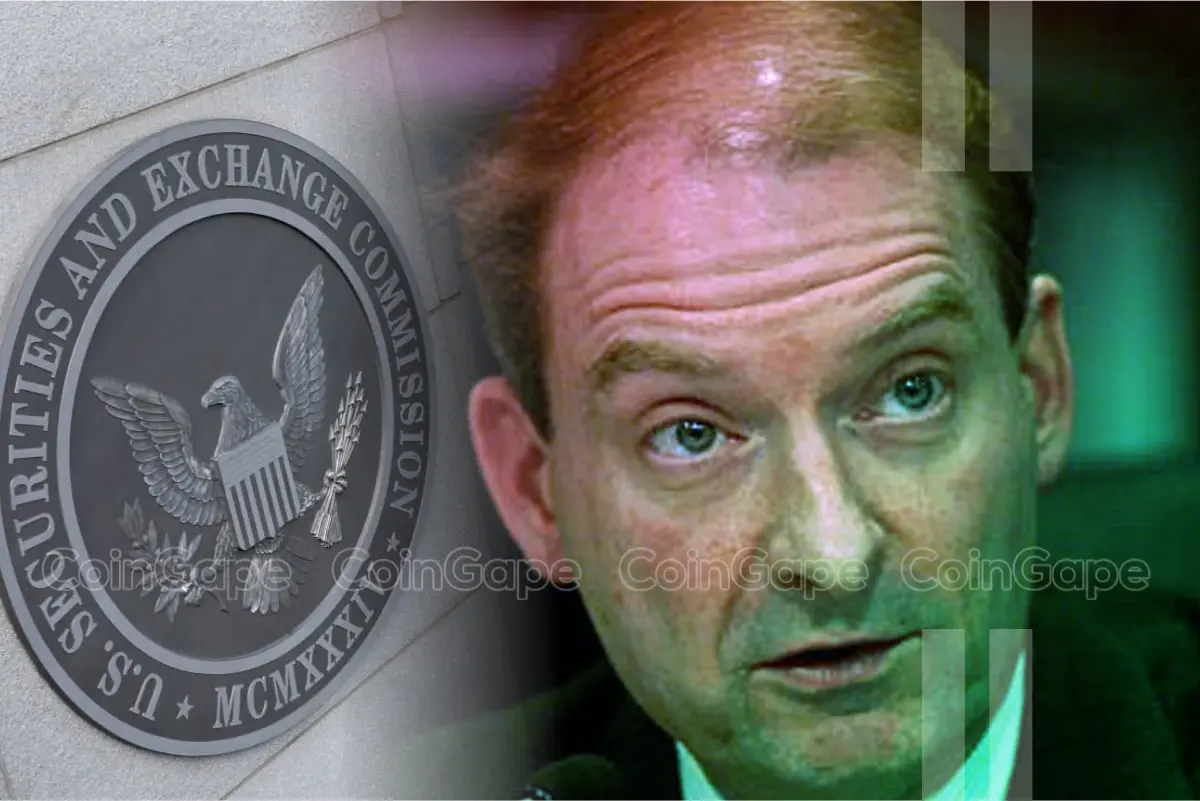Regulation
Federal Reserve Meeting Major Highlights and Key Points

The Federal Reserve lowered the target range for the federal funds rate by 50 basis points on Wednesday. This action brings the rate to a new range of 4.75% to 5.00%, which is the first decline in four years. The decision is in line with the Fed’s policy of ensuring that inflation is kept in check without jeopardising the stability of the economy.
Federal Reserve’s Justification for Rate Cut
The Federal Reserve announced the rate cut citing recent economic figures that pointed to growth at a steady pace, but with some moderation. Although job creation has slowed down and the unemployment rate has risen marginally, inflation is slowly moving towards the Fed’s target of 2%.
The central bank considers the outlook for the economy as still cloudy however, it views the risks to achievement of the dual mandate as evenly split.
Chair Jerome Powell noted that this decision is a small step to fine-tune policy to help maintain economic conditions. He told the market that the Fed is still determined to meet its employment and inflation targets. In addition, the Fed is likely to go on reviewing the data flow and may change the course of its policy should new economic circumstances occur.
Powell’s Perspective on the Economic Landscape
Jerome Powell noted that the US economy is healthy, and the economic growth is expected to remain strong. Inflation is gradually coming down while the labor market remains robust even as job creation slows down.
The Fed Chair emphasized that the Fed’s goal is to return inflation to its target level without causing a sharp increase in unemployment, which is typical for disinflation.
The head of the central bank also added that the low interest rate environment that has been observed in the previous years is not expected to continue in the future. Powell admitted that the neutral rate – the interest rate that does not stimulate or hinder economic growth– could be much higher now but it is still unclear just how high it is. This shift is a break from previous monetary policies that have involved extended periods of near-zero interest rates.
Reactions to the Federal Reserve’s Decision
However, the rate cut was not supported by all members of the Federal Open Market Committee (FOMC) as the Fed Governor Michelle Bowman voted for a 25 basis point cut. Nevertheless, the Fed Chair stressed that there was consensus within the committee regarding the need for policy change. He stressed that the decision would be taken from one meeting to another, considering the current and forecasted trends.
Some of the investors have been supportive but many of them have raised their concerns that the 50 basis points cut was too much. Financial markets expressed their reaction with keen interest with the S&P 500 and the Dow Jones setting new highs after the announcement. However, concerns over the size and the time of the cut diminished the rally, as some think that the economy is still quite healthy and did not necessitate such a deep cut.
Yes, that’s what the stock market wanted from the #FOMC This is the S&P 500. pic.twitter.com/O6FKSdRfEY
— John Authers (@johnauthers) September 18, 2024
Moving forward, the Federal Reserve’s Summary of Economic Projections (SEP) indicates that interest rates may fall even more in 2025 and 2026. According to the SEP, rates could be at 4.25% to 4.5% by the end of this year with more possible cuts to follow. According to its current forecasts, the central bank expects interest rates to reach 2.9% by 2026, which may suggest a further softening of monetary policy.
While the Fed decided to decrease rates, Jerome Powell noted that this does not mean that the same trend will persist in the future. He emphasized that each decision will be made based on current and future economic conditions and information. Thus, the market participants should not anticipate the central bank to deliver similar decisions at the subsequent meetings.
Labor Market and Inflation Considerations
The Federal Reserve has also paid keen interest to the labor market leading to this rate cut. As the Fed Chair pointed out, although job creation has decelerated in the past few months, the labor market is still very close to full capacity. However, the Fed is keeping a close eye on these trends, as a sharp decline in job growth could be indicative of an economic decline.
Concurrently, inflation remains the primary concern for the Federal Open Market Committee (FOMC). The Fed Chair stated that, according to the PCE price index, inflation is projected to decline to 2.2% in August from 2.5% in July. This action takes inflation rate nearer to the Fed’s 2% target, thus strengthening the Fed’s stance on the policy adjustment.
Despite the positive signs, some experts worry that the Fed might be acting too quickly. They argue that the U.S. economy remains robust, with unemployment still relatively low, and that further easing could spark unnecessary risks, such as asset bubbles or overheating in certain sectors. Nevertheless, Jerome Powell maintained that the Fed’s approach has been patient and that its decision to cut rates reflects confidence in inflation’s steady decline.
Disclaimer: The presented content may include the personal opinion of the author and is subject to market condition. Do your market research before investing in cryptocurrencies. The author or the publication does not hold any responsibility for your personal financial loss.
Regulation
US SEC Acknowledges Fidelity’s Filing for Solana ETF

The U.S. Securities and Exchange Commission (SEC) has formally acknowledged the filing for Fidelity’s spot Solana (SOL) Exchange-Traded Fund (ETF).
This marks a key development in the financial industry, as Fidelity seeks to list its Solana ETF on the Cboe BZX Exchange. The acknowledgment comes after Fidelity submitted a proposed rule change, paving the way for the potential approval of the product.
Fidelity’s Spot Solana ETF Proposal
The SEC’s acknowledgment follows Fidelity’s filing to list and trade shares of the Fidelity Solana Fund under the Cboe BZX Exchange. The proposed rule change, initially submitted on March 25, was later amended on April 1, 2025, to clarify certain points and add additional details.
The amended proposal aims to list the Solana ETF under BZX Rule, which pertains to commodity-based trust shares. According to the Cboe BZX Exchange, Fidelity plans to register the shares with the SEC through a registration statement on Form S-1.
Fidelity’s experience with crypto ETFs, having launched the Fidelity Wise Origin Bitcoin Fund (FBTC) and the Fidelity Ethereum Fund (FETH), has prepared it for this new initiative. FBTC has drawn substantial interest, accumulating nearly $17 billion in assets, while FETH currently manages around $975 million.
This Is A Developing News, Please Check Back For More
Disclaimer: The presented content may include the personal opinion of the author and is subject to market condition. Do your market research before investing in cryptocurrencies. The author or the publication does not hold any responsibility for your personal financial loss.
Regulation
US Senate Banking Committee Approves Paul Atkins Nomination For SEC Chair Role

The U.S. Senate Banking Committee has voted to approve Paul Atkins’ nomination for the role of Chair of the Securities and Exchange Commission (SEC). The vote, which took place on Thursday, passed with a narrow margin of 13-11, along party lines.
Paul Atkins, nominated by President Donald Trump, now moves one step closer to taking over the top regulatory position at the US SEC.
Senate Banking Committee Approves Paul Atkins Nomination
Paul Atkins’ nomination for SEC Chair has received approval despite sharp opposition from Democratic members of the Senate Banking Committee. The vote was entirely split, with Republicans supporting Atkins and all Democrats opposing the decision.
This partisan divide highlights the contentious nature of Atkins’ confirmation, which had been under scrutiny for several reasons.
The committee’s approval now clears the path for Atkins to proceed to the full Senate for a final confirmation vote. Given the Republican-controlled Senate, it is widely expected that Atkins will secure the necessary votes to take over the SEC leadership. With Republicans holding a 53-47 majority in the Senate, the confirmation process is anticipated to move forward swiftly.
This Is A Developing News, Please Check Back For More
Disclaimer: The presented content may include the personal opinion of the author and is subject to market condition. Do your market research before investing in cryptocurrencies. The author or the publication does not hold any responsibility for your personal financial loss.
Regulation
Kraken Obtains Restricted Dealer Registration in Canada

Cryptocurrency exchange Kraken has obtained a Restricted Dealer registration in Canada. The registration comes after completing a pre-registration undertaking (PRU) process with Canadian authorities.
The exchange has also announced the appointment of Cynthia Del Pozo as its new General Manager for North America. Del Pozo will oversee Kraken’s growth initiatives in Canada.
Kraken Completes PRU Process In Canada
Kraken’s Restricted Dealer registration marks the completion of a thorough pre-registration undertaking (PRU) process with Canadian regulators. The registration places Kraken under the supervision of the Ontario Securities Commission (OSC). This oversight ensures users have access to secure crypto products within a properly regulated local ecosystem.
According to the Canadian Securities Administrators (CSA), the Restricted Dealer registration is one of eight firm registration types in Canada. This particular classification is used for firms that “do not quite fit under any other category.” It also comes with specific requirements and conditions set by securities regulators.
Kraken’s regulatory achievement comes during a period of change in the Canadian crypto sector. Just months earlier, competitor Gemini exchange announced its departure from the Canadian exchange market by the end of 2024. This was a move that surprised many and raised questions about cryptocurrency regulation clarity in the country.
Kraken Introduces New Canadian GM
Del Pozo has joined Kraken to lead its Canadian operations as the new General Manager for North America. She has nearly 15 years of experience in corporate development, operations, and fintech consulting. Del Pozo will help to guide Kraken’s expansion across Canada during this important phase of crypto’s development in the region.
“Canada is at a turning point for crypto adoption, with a growing number of investors and institutions recognizing digital assets as a vital part of the financial future. I’m thrilled to join Kraken’s mission at this critical moment, and to lead our expansion efforts, ensuring we continue to serve our clients long-term with innovative and compliant products,” said Del Pozo.
In her role, Del Pozo will focus on strengthening Kraken’s regulatory relationships and also scaling the company’s presence throughout North America.
Del Pozo also commented on the registration achievement: “This Restricted Dealer registration is testament to the high bar Kraken has always set for consumer protection, client service, and robust security. We’re excited to continue expanding our world-class investment platform and to deliver innovative products that provide real-world utility to Canadians.”
The Exchange’s Continued Growth In Canada
Over the past two years, the cryptocurrency exchange has shown steady expansion in Canada while working through the PRU process with regulators. During this period, the exchange has doubled its team size and monthly active users.
According to the official blog post figures, the firm now has more than $2 billion CAD in total client assets under custody. Kraken has also increased support for some of the most popular cryptocurrencies. It provides several CAD spot trading pairs that enable Canadians to trade crypto without paying expensive foreign exchange fees.
According to Innovative Research Group’s 2024 Investor Survey, 30% of Canadian investors currently own or have owned cryptocurrencies. Likewise, a KPMG Canada survey discovered that 30% of Canadian institutional investors now have exposure to cryptocurrencies, which means widespread adoption across investor types.
Disclaimer: The presented content may include the personal opinion of the author and is subject to market condition. Do your market research before investing in cryptocurrencies. The author or the publication does not hold any responsibility for your personal financial loss.
-

 Regulation23 hours ago
Regulation23 hours agoUS Senate Banking Committee Approves Paul Atkins Nomination For SEC Chair Role
-

 Market22 hours ago
Market22 hours agoBinance Managed 94% of All Crypto Airdrops and Staking Rewards
-

 Market24 hours ago
Market24 hours agoTRUMP Token Hits Record Low Due To Liberation Day Tariffs
-

 Regulation20 hours ago
Regulation20 hours agoUS SEC Acknowledges Fidelity’s Filing for Solana ETF
-

 Market19 hours ago
Market19 hours agoWormhole (W) Jumps 10%—But Is a Pullback Coming?
-

 Market23 hours ago
Market23 hours agoPi Network Price Falls To Record New Low Amid Weak Inflows
-

 Market20 hours ago
Market20 hours agoRipple Shifts $1B in XRP Amid Growing Bearish Pressure
-

 Altcoin19 hours ago
Altcoin19 hours agoAltcoin Season Still In Sight Even As Ethereum Struggles To Gain Upward Momentum























✓ Share: